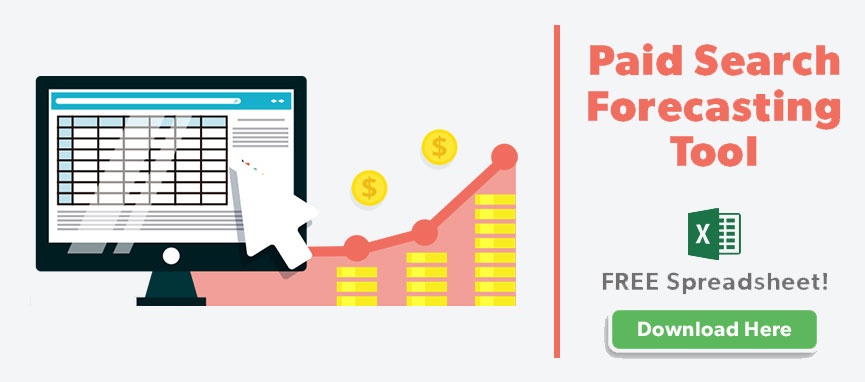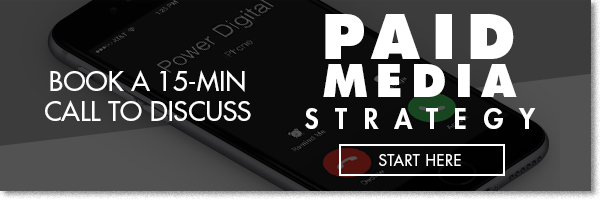How Does Pay-Per-Click Work? Beginners guide

The vast world of internet marketing offers a lot of options for advertisers, but it’s easy to see why Pay-Per-Click has become one of the most popular and effective advertising models. In this day and age, companies don’t stand a chance without an impactful web presence. So naturally, one of the top marketing goals for every company is driving traffic to a website.
It’s also more important than ever to rank high in the Google search results through both paid and organic search strategies. You may have heard the adage: Where’s the best place to hide a dead body? The second page of Google search results. That’s because studies show most consumers don’t waste time with second-page results; they want the top sites related to their search queries. Running a PPC campaign can fast track you to the first page of Google. There are some caveats though – bidding can get expensive, and if you don’t follow the guidelines for a successful ad campaign, you can end up hurting your brand’s web presence.
With all that said, gathering leads and drawing targeted consumers into the beginning of a sales funnel is the bread and butter of PPC, so that might be something you want to consider when it’s time to take your marketing efforts to the next level. So, how does PPC work and why should you be adding it to your digital marketing strategy? This blog is going to tell you everything you need to know about paid advertising so you can reach your target audience and drive conversions.
What is Pay-Per-Click?
Also referred to as Cost Per Click (CPC), Pay-Per-Click advertising is something you probably see every day and you don’t even know it. You know when you Google something and the first 3-4 results at the top of the page are sponsored results? You know how if you look to the right of those results there’s pictures and links to content related to your search? That’s PPC in action.
So how does this work? Marketers only have to pay the host search engine when the advertisement is clicked on by an internet user. As you can imagine, with so much competition in the marketplace, there simply isn’t room for every company related to a search query to appear. Imagine you searched the words ‘winter coats’ – there’s a lot of companies that make winter coats who would love to have their brand pop up every time someone entered this search. And that’s where auction pricing comes into play. Advertisers bid on the relevant keyword phrases, and the highest bidders are awarded the most prominent digital real estate. That’s why using a PPC agency can be very beneficial to your overall marketing strategy.
Related: How much does PPC Cost?
Below are the different forms of PPC.
Popular Types of PPC
There are a few different types of ads within the PPC model, but the one that gets the most eyes on it is Paid Search Advertising
Paid Search Advertising — The two big providers of Paid Search Advertising are Google AdWords and Bing. As discussed above, your ads are shown to users after they’ve entered a specific search query. The process involves creating an ad campaign with relevant ad copy, bidding on keywords and designating the best landing page for click-throughs.
Display Ads — These ads are from the more traditional style of internet advertising using some combination of banners, images, and copy. They appear on all websites that partner with Google, but only to a specific targeted audience. The benefit of display ads is that you can customize who sees your ad based on an array of demographics. Finely tuning your audience allows you to track your ROI much closer. Marketers have mixed feelings about display ads because in some cases they have a bad reputation with consumers. If not done correctly they can be intrusive to internet users. However, when used in the right capacity they can be a strong tool for brand awareness.
Retargeting — Let’s say you’re shopping for shoes on Nordstroms.com, and you decide you’re not going to buy anything, so you continue surfing the internet, but suddenly a Nordstroms ad pops up on a different site. You’ve been retargeted. This form of PPC targets consumers who have shown interest in a brand. It’s the company’s way of saying, “you still interested?” It’s an excellent way to automatically follow up with a customer who may have become distracted or have second thoughts during the purchase process. You can take things one step farther by implementing dynamic retargeting, which is where instead of just a generic Nordstroms ad, the exact shoes that you were viewing would appear in the ad. Companies who experience a lot of abandoned carts and high bounce rates might find success using a form of retargeting.
Elements of PPC
Not all PPC ads are successful. In fact, if you rush the process, and don’t do your homework, these ads may end up hurting your brand and sometimes even your relationship with essential partners like Google. Here are some crucial elements to maximize success.
The Campaign – There are lots of setting to tinker with when setting up your campaign. It’s advised not to settle for Google’s default settings, as they most likely set up to benefit them, not you (ads are their primary revenue source). You can choose if you want to utilize search ads or display ads, or both. For PPC newbies it’s recommended to start with search ads only for a more concentrated approach. The option to display ads on mobile devices is something to strongly consider – we all know how often people use their phones. Other important elements to explore are geographical locations, languages, and manual PPC budget parameters.
Ad Group – When looking at your PPC efforts, it’s helpful to look at everything as a hierarchy. If the PPC campaign is CEO, ad groups are like the department heads. For instance, let’s say you’re running a back to school campaign. Within that campaign are an ad group for school supplies and another for clothes. Naturally, the keywords, ad text, imagery, and landing page should be different for each ad group. If you’re practicing PPC correctly, you should be making changes to your ads all the time. Ad groups are a great way to stay organized, allowing you to make changes quickly and effectively.
Keywords – Choosing the right keywords isn’t as easy as you might think. Also, you have to consider that the competition for popular keywords raises costs. It’s recommended you use keyword tools such as Google’s Keyword Planner to explore the best choices for your campaign. There are also paid options such as Spyfu which provide comprehensive keyword assistance.
Related: Paid Search (PPC) Best Practices – Top 5 Tips
Ad Text – You can own property on the boardwalk, but if your house is a mess no one is going to want to come inside. That’s why it’s important to write ads that are appealing and catered to your audience. In 60 characters you have to offer value, information and insert a call-to-action.
Landing Page – This is where the customer ends up after they click your ad, so you want to make a big impact on that first page. Don’t stray too far away from what the ad is offering; the user expects to see something directly related to what they clicked on. Include a logical call to action on your landing page that continues to pull consumers through the sales funnel. Try using A/B testing to determine which style of landing page is yielding the best results.
Related: Understanding AdWords Match Types
What is the Cost of PPC?
The cost of PPC varies quite a bit depending on what industry you’re in, what keywords you choose, and the other parameters of your campaign. Imagine you’re in the insurance industry, think about how competitive the keyword ‘Insurance’ must be. The ad bidding wars for insurance companies yields extremely high costs. If you’re in a competitive field, the best way to lower costs is by selecting keywords that aren’t quite as on the nose. For example, if you’re a sporting goods store, and you can’t afford to bid on the keywords ‘sporting goods’, then try adjacent more specific words like ‘leather catcher’s mitt.’
How Long Does PPC Take?
It really depends on your campaign goals. Some ads are determined to create brand awareness over a long period of time, and some are geared towards driving consumers to a holiday sale. If you’re new to PPC chances are it’s going to take longer (at least three months) because Google needs to build a digital relationship with your brand. There’s something called quality score that Google uses to assess its advertisers. The best way to improve your quality score is by using Adwords frequently and by constantly updating and improving your campaigns. It allows Google to gather more information — the more data Google has on you, the better it can optimize your brand.
If you’re debating whether to focus your marketing efforts on PPC or SEO, there are a few key differences to note. One, the traffic you draw from PPC marketing costs money, whereas SEO is free. Two, if you’re new to both, PPC is typically a little bit quicker, in some cases, it takes half the time, whereas SEO can take up to 6 months to show results. Three, users are often trained to ignore ads, which means you could miss out on an entire section of your demographic by focusing solely on PPC. The best strategy is a harmonious blend of the two.
Related: 5 Essential SEO Tips Even Traditional Marketers Need to Know
Wrapping Up
The best way to use PPC marketing is by staying organized and using it frequently. Without question, Google is the host you should focus most of your PPC efforts toward. They place a premium on companies who have lots of data to pull from. If you’re constantly updating and tinkering with your PPC ads, Google is going to be able to position your brand better. By understanding the different PPC elements, and how they function, you’ll be able to create an impactful ad strategy that will build brand awareness, drive traffic and maximize conversions. Get in touch today to learn about our PPC management services.
Our Editorial Standards
Reviewed for Accuracy
Every piece is fact-checked for precision.
Up-to-Date Research
We reflect the latest trends and insights.
Credible References
Backed by trusted industry sources.
Actionable & Insight-Driven
Strategic takeaways for real results.







